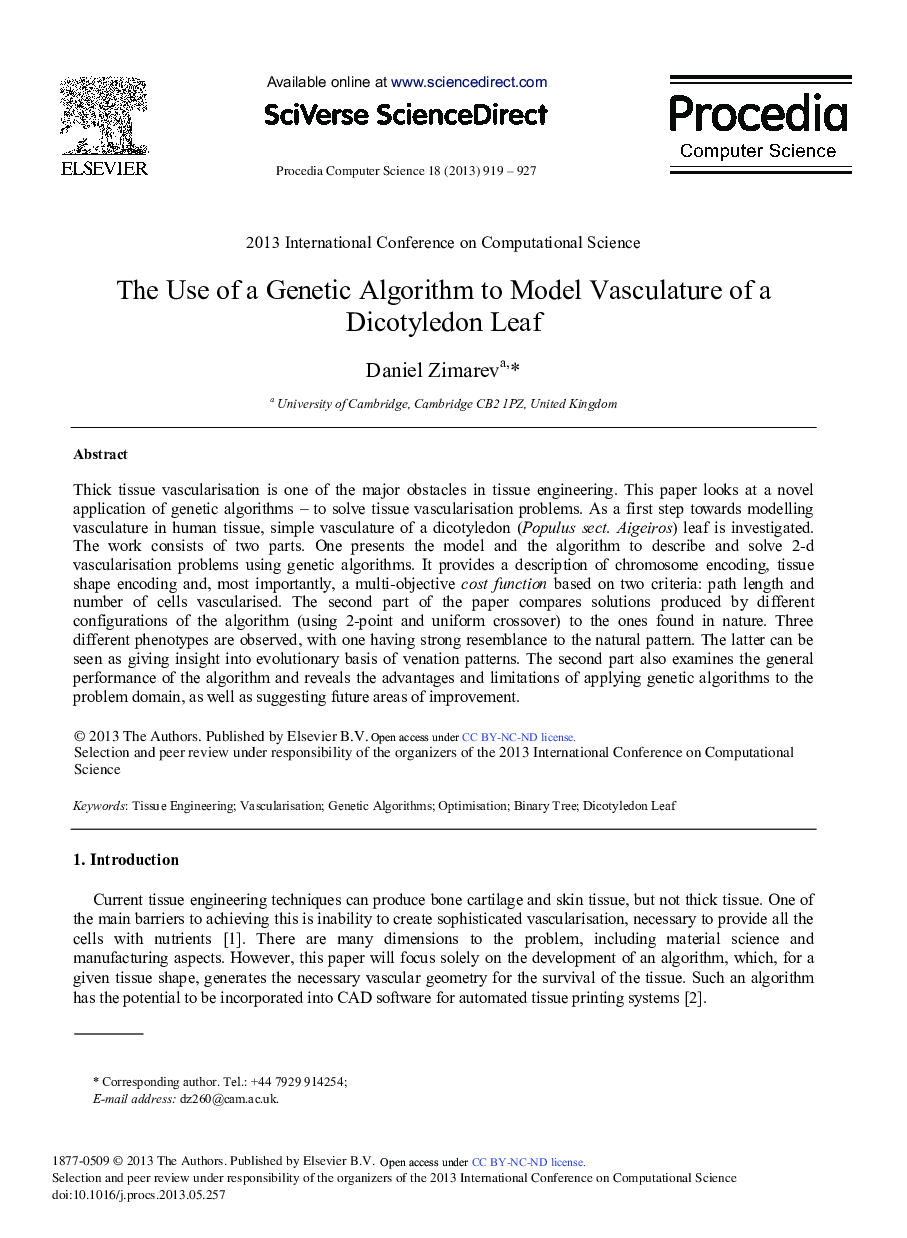| Article ID | Journal | Published Year | Pages | File Type |
|---|---|---|---|---|
| 490567 | Procedia Computer Science | 2013 | 9 Pages |
Thick tissue vascularisation is one of the major obstacles in tissue engineering. This paper looks at a novel application of genetic algorithms – to solve tissue vascularisation problems. As a first step towards modelling vasculature in human tissue, simple vasculature of a dicotyledon (Populus sect. Aigeiros) leaf is investigated. The work consists of two parts. One presents the model and the algorithm to describe and solve 2-d vascularisation problems using genetic algorithms. It provides a description of chromosome encoding, tissue shape encoding and, most importantly, a multi-objective cost function based on two criteria: path length and number of cells vascularised. The second part of the paper compares solutions produced by different configurations of the algorithm (using 2-point and uniform crossover) to the ones found in nature. Three different phenotypes are observed, with one having strong resemblance to the natural pattern. The latter can be seen as giving insight into evolutionary basis of venation patterns. The second part also examines the general performance of the algorithm and reveals the advantages and limitations of applying genetic algorithms to the problem domain, as well as suggesting future areas of improvement.
